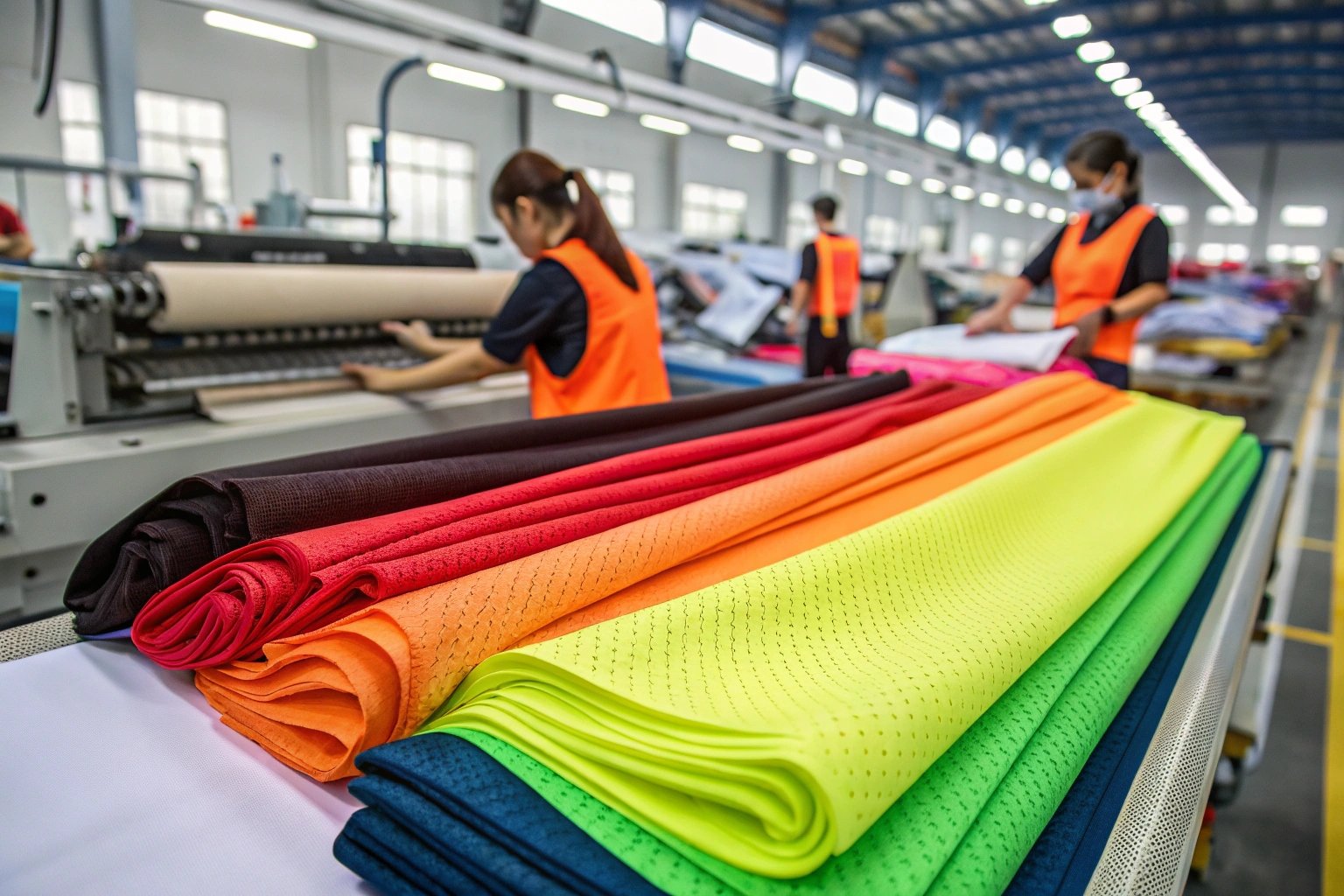Seamless activewear has redefined performance and comfort in modern apparel. As fitness, athleisure, and streetwear increasingly overlap, selecting the right fabric for these garments becomes critical—not just for performance but for brand identity and sustainability. For textile buyers like Ron from the U.S., the fabric choice isn’t just a technical matter; it’s a core business decision that affects pricing, wearability, and consumer trust.
The best fabric options for seamless activewear are those that balance elasticity, durability, breathability, and skin sensitivity. Nylon blends, polyester with spandex, and advanced moisture-wicking synthetics top the list due to their comfort and shaping properties.
To help you source effectively, this guide will explore four categories of top seamless fabric types, highlight real-world sourcing considerations, and provide clear recommendations based on market demands and technical performance.
What Makes Nylon Blends a Favorite for Seamless Styles?
Nylon blends have long been favored for their soft hand-feel, resilience, and stretch recovery. Seamless activewear relies heavily on circular knitting technologies, where yarn composition significantly affects final garment performance.
Nylon-spandex blends, especially those using 6.6 grade nylon, deliver unmatched stretch and shape retention, making them ideal for compression wear and yoga sets.
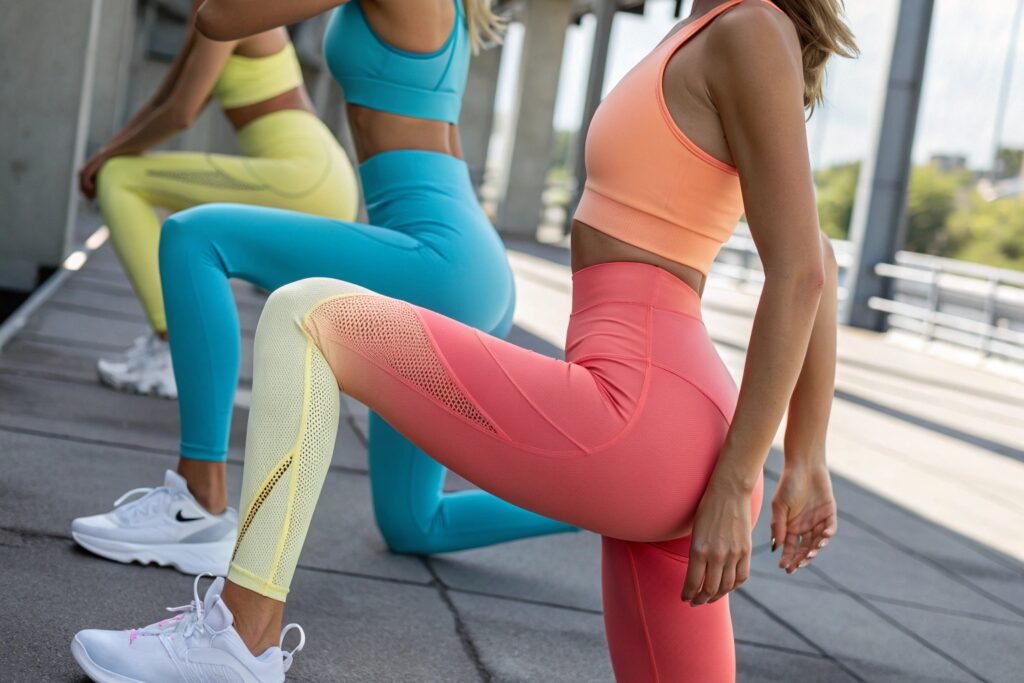
Why Do Nylon-Spandex Blends Dominate Performance Wear?
Nylon offers excellent tensile strength and abrasion resistance—critical for high-movement garments. When blended with spandex (typically 10–20%), it allows for 4-way stretch and rapid recovery without deformation.
This is why brands like Under Armour and Alo Yoga rely on this blend for seamless performance wear. Nylon also dyes better than polyester, offering rich and lasting colors—a key point for fashion-forward buyers.
How Does Moisture Retention Compare to Other Options?
While nylon is slightly more absorbent than polyester, advanced finishes like wicking treatments or nano-coatings reduce sweat retention. This enables high-performance results during hot yoga or cardio training. For example, Coolmax® technology can be used with nylon fibers for extra dryness. At Fumao Fabric, we can integrate such finishes at the knitting or dyeing stage.
Is Polyester a Cost-Effective Choice for Seamless Athleisure?
Yes—polyester remains a leading fiber in the seamless segment due to its cost-effectiveness, strength, and versatility. It is less expensive than nylon and often used for base-layer garments, compression tights, or general-purpose seamless shirts.
Polyester blended with elastane is the go-to fabric for mid-tier performance wear—offering durability, lightweight feel, and resistance to pilling.
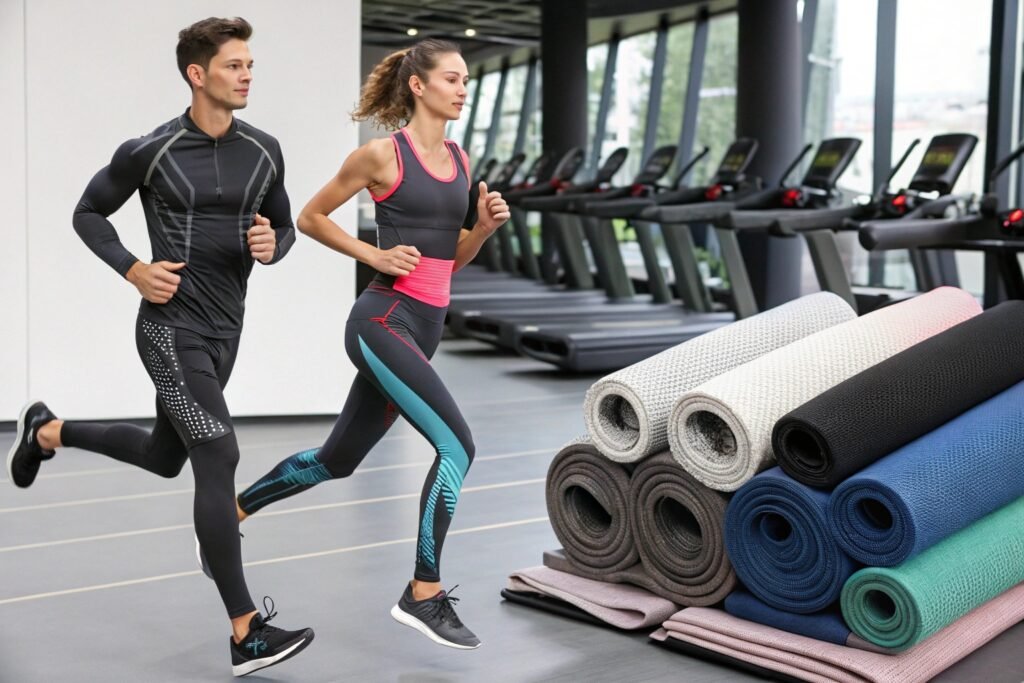
Why Choose Polyester Over Nylon for Seamless Wear?
From a sourcing perspective, polyester yields a higher return on investment. It dries faster, resists UV degradation better, and has a lower water footprint during dyeing. Global retailers like Decathlon rely on polyester blends for their high-volume fitness lines due to scalability and price advantage.
Our clients often ask whether the slightly stiffer hand feel is a drawback. However, when processed with circular weft knitting and silicon softeners, polyester fabrics can mimic nylon’s texture.
What Are the Best Spandex Ratios for Polyester Blends?
For seamless apparel, a 12–18% spandex content ensures body-hugging fit. Fabrics with air-covered or core-spun spandex yarns offer better dyeing consistency. At Fumao, we can engineer polyester-elastane blends optimized for various gauges (26GG to 36GG), suitable for both high-support bras and lightweight base tops.
Can Eco-Friendly Fibers Be Used in Seamless Production?
Eco-conscious buyers are increasingly asking whether green materials can align with seamless garment construction. The answer is yes—with the right partners and yarn quality.
Recycled polyester (rPET) and biodegradable Tencel™ Modal or Lyocell can be seamlessly knit using modified circular machines, offering a greener option for performance brands.
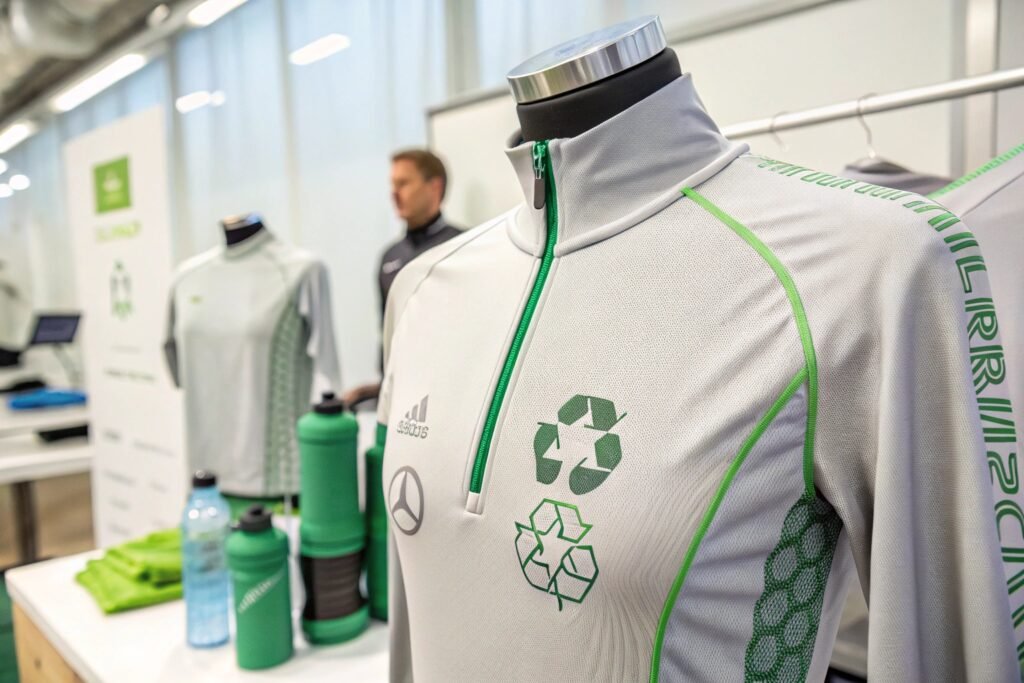
How Durable Are Recycled Polyester Options?
Today’s rPET yarns, such as those from REPREVE®, are nearly indistinguishable from virgin polyester in texture and strength. They perform well in seamless applications with minimal shrinkage or dyeing issues. Many of our EU clients use 100% rPET for seamless base layers and have passed Oeko-Tex® and GRS certifications through our facility.
Can Modal or Tencel Fibers Be Used in Circular Knitting?
Yes, but with caveats. Cellulosic fibers like Modal and Lyocell have lower elasticity than synthetics. To offset this, we use blend strategies (e.g., 60% Modal + 35% polyester + 5% spandex) to maintain stretch. These blends offer a soft, luxurious feel—great for lifestyle seamless wear rather than high-impact sportswear.
What Functional Finishes Enhance Seamless Activewear?
Seamless garments often lack cut-and-sew linings, which means functional performance must come directly from the fabric or applied finishes.
Popular enhancements include antibacterial silver-ion coatings, UV-block finishes, and moisture-wicking treatments—all of which we offer at Fumao through our certified wet and dry finishing processes.
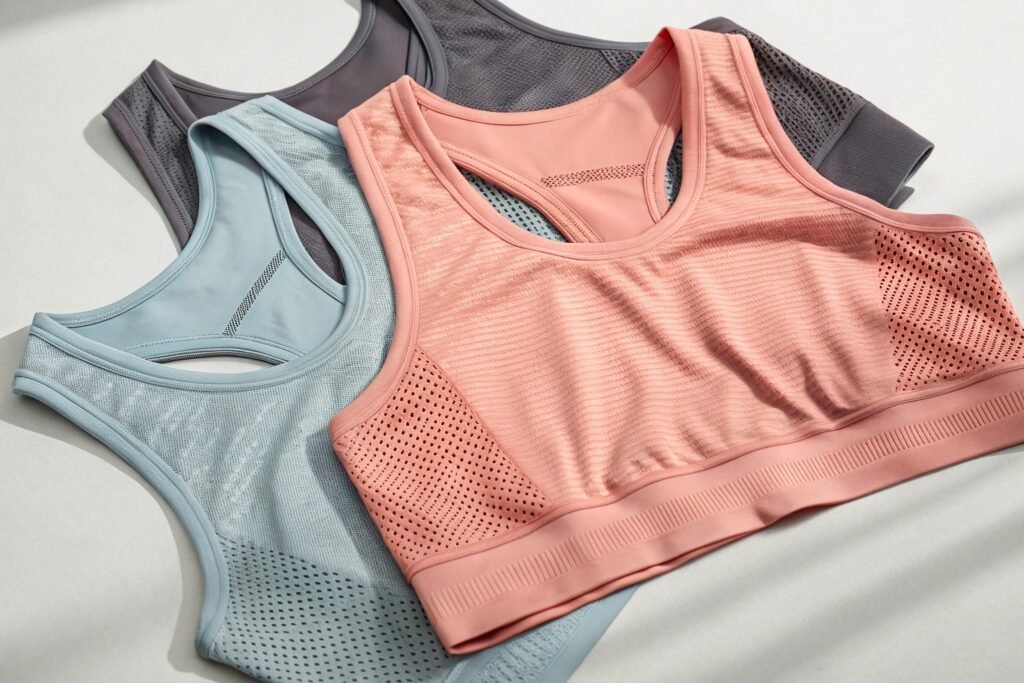
How Important Is Antibacterial Treatment for Sportswear?
Extremely. Consumers demand odor control and hygiene in fitness wear. Brands like Lululemon and Gymshark utilize antimicrobial finishes. At our Keqiao facility, we use silver-based and zinc-based treatments compliant with EU REACH standards.
These finishes bond at the fiber level, allowing 40–50 washes of efficacy. Our lab tests using ISO 20743 methods confirm >99% bacteria inhibition for treated fabrics.
What Are the Key UV Ratings for Outdoor Seamless Styles?
Ultraviolet Protection Factor (UPF) is a big selling point for activewear. A UPF 50+ rating is now standard for outdoor fitness brands. We help clients meet this by using tight-knit constructions and UV-enhancing dyeing chemicals from Huntsman Textile Effects.
For summer collections, combining these treatments with mesh zones in seamless designs ensures both breathability and sun defense.
Conclusion
Choosing the best fabric for seamless activewear isn’t just about stretch and fit—it’s about market differentiation, end-user satisfaction, and long-term brand trust. Whether you prioritize performance, price, sustainability, or certifications, your fabric partner plays a central role. At Fumao Fabric, we don’t just manufacture—we co-develop textiles tailored for your brand goals, with flexible MOQs and complete support from sampling to delivery. Seamless doesn’t mean compromise—it means possibility.

